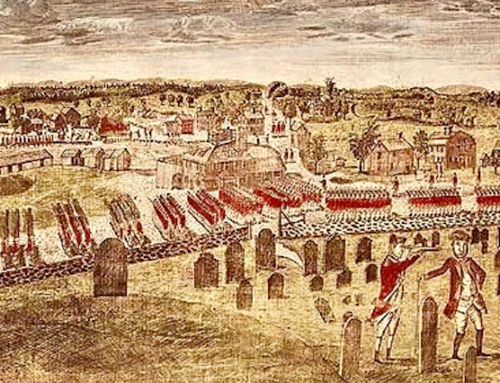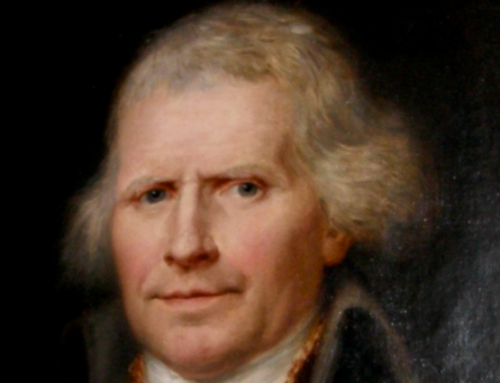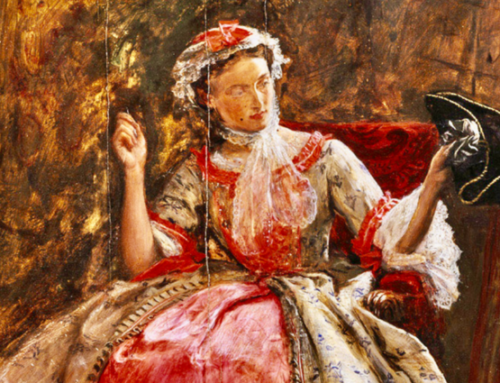Constantino Brumidi’s fresco is less a deification of George Washington than it is a creative recording of his achievements and his legacy for our nation’s politicians.
That the U.S. possesses its own rich history in art and boasts a series of internationally acclaimed painters is no surprise. Indeed, a walk through the Art Institute of Chicago, the Philadelphia Museum of Art, and the Metropolitan Museum of Art is enough to showcase some of the finest works of art produced by American painters. Many of these paintings, moreover, focus on the significance of the Founding and of our Founding Fathers. The founding of a nation, we know, is a great cause for celebration and commemoration. The figures who shape the course of history become immortalized in our books and, consequently, our imaginations. Emanuel Leutze’s Washington Crossing the Delaware (1851) most readily comes to mind as an astonishing demonstration of the sheer size and emotion with which painters depicted our first president. It was only until recently, however, that I learned about the fresco that lives in our U.S. Capitol building: The Apotheosis of Washington (1865), completed a little over a decade after Leutze’s famous painting.
The artist is Constantino Brumidi, a Greek-Italian painter who immigrated to the U.S. and became, like many of us, a naturalized citizen. Apart from his role in the creation of the U.S. Capitol, he lent his talents to various nations, including Mexico. The Mexico City Metropolitan Cathedral features a work by him that depicts an allegory of the Holy Trinity in its altarpiece. His work is not just in the U.S. Capitol and in Washington, D.C., furthermore: his art can be seen in Baltimore (Taylor’s Chapel), Philadelphia (Basilica of Saints Peter and Paul), and New York (St. Stephen’s Church), to name a few other locations. A great majority of his works are located in churches, making his fresco in the U.S. Capitol building exceptional. The fresco is located in the eye of the Capitol’s Rotunda, and it is a sight to behold.
The style might remind us of many high frescoed depictions of the heavens, with saints and angels adorning the heights. Some looking down at us, some pointing upwards. This style is typical of Italian Renaissance frescoes. After all, although frescoes long preceded the 15thcentury, it achieved its apogee through the glorious works by Italian masters Perugino, Botticelli, and Michelangelo. The Sistine Chapel’s frescoes and the School of Athens are only a small—albeit grandiose—example of the beauty of this type of painting (a personal favorite are Giotto’s frescoes in the Scrovegni Chapel, though these were made before the Renaissance period and are exemplars, instead, of medieval Italian art). The idea of placing a fresco on a ceiling opens up the possibilities with which an artist can elevate the space. For this reason, they often open up the space by granting the viewer a glimpse to the heavens through the illusion of a three dimensional space (see, for example, Pietro da Cortona’s incredible Allegory of Divine Providence).
Frescoes are also admirable in themselves as an artform. It is a method of painting in which color pigments are mixed with water and directedly painted on fresh (still-drying) wall or ceiling plaster. In other words, the artists have one chance once they paint on their surface, although they typically outline the idea for their work with chalk before starting to put color to the work. Needless to say, Brumidi’s technique is a masterful depiction of an ancient artform, and the technique itself is important to bear in mind when appreciating the work. There are, of course, several differences between traditional Italian frescoes and Brumidi’s own rendition on the Capitol dome.
With only a quick glance up the fresco’s impressive 180 feet elevation, Brumidi’s fresco would appear to be identical in style and form to a Renaissance fresco (he was trained in Rome, after all)—at least until we notice sitting at the top of the heavens a figure one would immediately recognize as George Washington. It might appear odd to “apotheosize” the father of our nation, though it is important to remember where the work is featured: inside the building that hosts one of our three branches of government. In this sense, the fresco is less a deification of Washington as it is a creative recording of his achievements and his legacy for our nation’s politicians. The work is historical, and like any historical painting, it is also telling us a story about how we understand our nation and its identity. The fresco is also a testament to Brumidi’s own interpretation of his adopted nation’s legacy, since the way in which he chose to commemorate Washington demonstrates his original touch to the great American story.
As the official site of the Capitol’s architecture notes, Washington is surrounded by two women who represent Liberty and Victory. At Washington’s feet we see a rainbow, and around him are thirteen women that stand for the thirteen colonies holding up a sign that reads E Pluribus Unum. The fresco is replete with symbols, and luckily the website of the U.S. Capitol explains them nicely. For example, we can make out six separate groups in the fresco, each representing different themes that are central for the United States and its development which follow a clockwise sequence: War, Science, Marine, Commerce, Mechanics, and Agriculture. These themes are represented by a combination of Roman gods (such as Minerva, Neptune, and Ceres) and historic figures (such as Benjamin Franklin, Robert Fulton, and Robert Morris) who played a role in that particular theme’s development within the American context. The painting demonstrates Brumidi’s talent for creating the illusion of depth and his figures are as tall as fifteen feet. More impressive is his ability to depict so many figures in such clarity, especially considering that he is not painting on a flat canvas or surface; rather, on a dome that is supposed to make sense to the viewer down below. The scene covers a large surface area: 4,664 square feet. It was completed in eleven months, at the end of the Civil War in 1865. In April of that year, General Lee surrendered and President Lincoln was assassinated, indicating that Brumidi was completing The Apotheosis of Washington during a time when several critical moments in American history were taking place. Even in the midst of tragedy, such as the assassination of one of our nation’s greatest presidents, art was being created to sustain the memory not just of Washington, but of the nation’s contribution to history.
This fact brings us to the topic of whether frescoes such as Brumidi’s The Apotheosis of Washington, or any memorial for that matter, should be reverential. We might easily mistake such a work with a blind reverence; one that neglects all of the struggles that took place and continue to take place as we continue to build a story worth telling about our nation. Indeed, this is not the case. Brumidi’s fresco demonstrates, instead, the purpose of art: to lift up our spirits and grant us something—an ideal—worth striving for, even when the reality falls short by combining the ideal with the historic. This sentiment is nothing new, of course. It is but an “antiquated” view about art that sustains its transcendent importance as one of the few mediums through which we may continue to feel a moment of inspiration and faith in our shared community which we can proudly call our nation, be it adopted, emotional, native, or anything in between.
The Imaginative Conservative applies the principle of appreciation to the discussion of culture and politics—we approach dialogue with magnanimity rather than with mere civility. Will you help us remain a refreshing oasis in the increasingly contentious arena of modern discourse? Please consider donating now.
The featured image is “The Apotheosis of George Washington” a fresco created by Constantino Brumeldi for the dome of the U.S. Capitol Building. This file is licensed under the Creative Commons Attribution-Share Alike 3.0 Unported license, courtesy of Wikimedia Commons.








Thank you for this. It is a wholly accurate and appropriate tribute to Brumidi’s powerful work. As a former Secretary of the Senate who has given dozens – hundreds – of tours of the Capitol, some additional context might be in order. Brumidi was criticized early for providing too much emphasis on European and mythological features. But note Brumidi’s depiction of Nautilus. He is helping lay the trans-Atlantic cable from New York to London, the “Internet” of its day. Fulton and Franklin are being “taught” by the Goddess Minerva about science, especially the steam engine. He learned to intertwine American’s young history with Greek mythology. The Senate’s official website delves more into the figures and is worth visiting. https://www.aoc.gov/explore-capitol-campus/art/apotheosis-washington